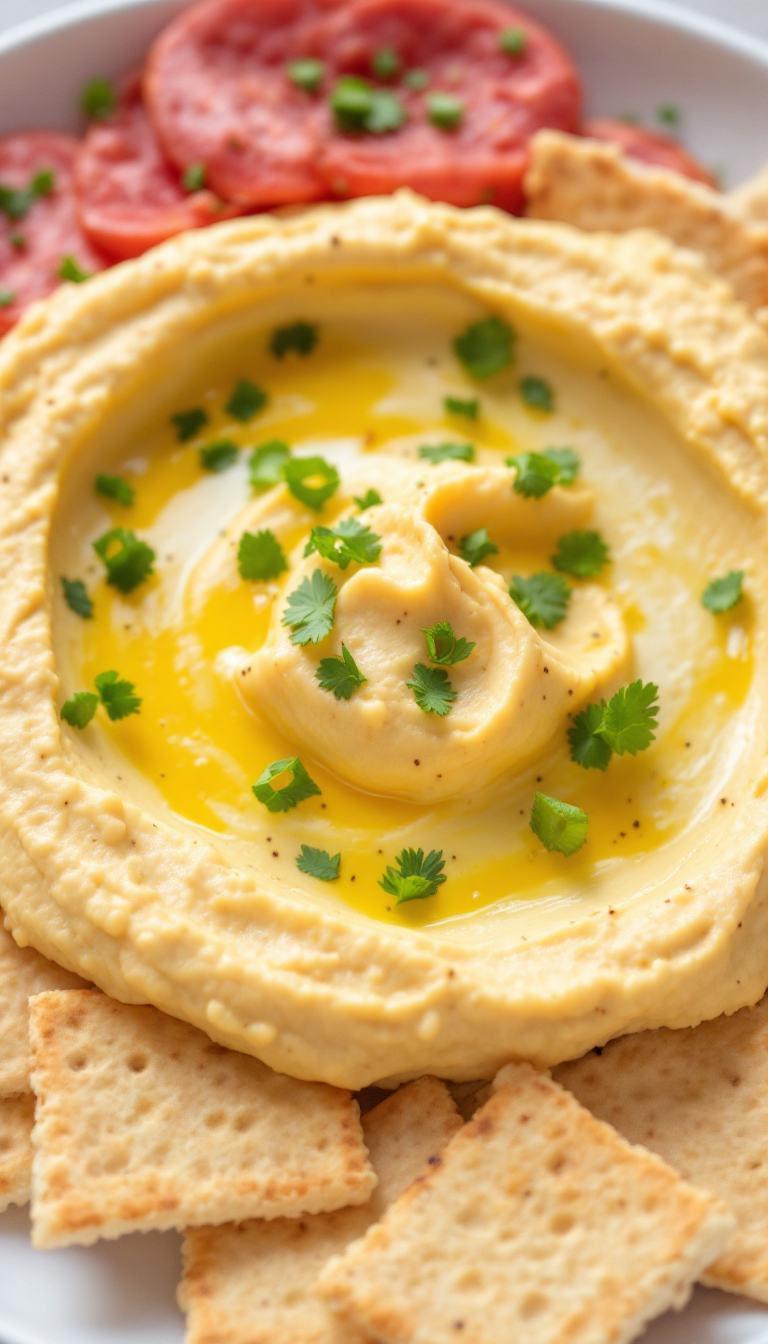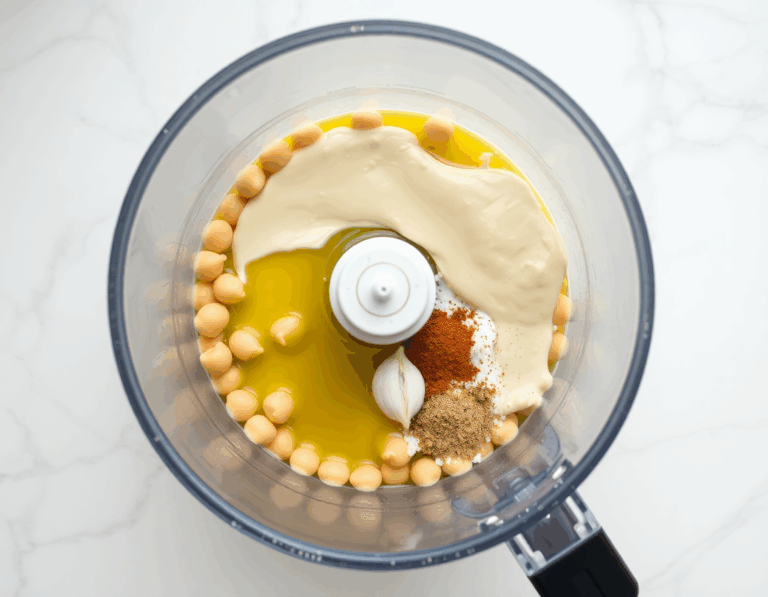
Hummus—it’s not just a dip; it’s a world of flavor waiting to explode in your mouth. Whether you’re scooping it up with warm pita or slathering it on a sandwich, each bite tells a story of its own (sometimes completely unexpected, like that time I accidentally added too much garlic and ended up with a vampire-repelling concoction). So, why settle for plain old hummus when you could embark on a taste adventure with these 20 diverse and delightful recipes?
Steps
- Drain a 15oz. can of chickpeas and place them in a food processor. Add 2 tablespoons of olive oil, 1/4 cup of lemon juice, 1/4 cup of tahini, 1 clove of garlic, 1/2 teaspoon of salt, and 1/4 teaspoon of ground cumin.
- Blend the mixture until it is smooth. If the hummus is too thick, add a few tablespoons of water, more olive oil, or liquid from the canned chickpeas to achieve the desired consistency.
- Taste the hummus and adjust the seasoning to your preference, adding more salt, lemon juice, garlic, or cumin if needed. Optionally, garnish with olive oil and a sprinkle of paprika or sumac before serving.

Ingredients
- 1 (15 oz.) can chickpeas (approximately 1.75-2 cups)
- 2 tablespoons olive oil
- 1/4 cup lemon juice
- 1/4 cup tahini
- 1 clove garlic
- 1/2 teaspoon salt
- 1/4 teaspoon ground cumin
Nutritional Values
Calories: 201.53kcal | Carbohydrates: 18.55g | Protein: 7.4g | Fat: 11.5g | Sodium: 371.85mg | Fiber: 5.92g
FAQ
- What is hummus and what are its basic ingredients?
- Hummus is a Middle Eastern dip or spread that is made from chickpeas. The essential ingredients include chickpeas, tahini, olive oil, lemon, garlic, and salt. You can also add different flavors to customize your hummus.
- How long can homemade hummus be stored?
- Homemade hummus can be kept in the refrigerator for about five days. Unlike store-bought versions, homemade hummus doesn’t have preservatives, so it’s best to make only as much as you can consume within that time.
- Is it possible to substitute tahini in hummus?
- It’s not recommended to substitute tahini in hummus as it provides a unique flavor essential for authentic hummus. While some people use peanut or almond butter as a substitute, these have different tastes and will alter the traditional flavor.
- Can I make hummus using a blender instead of a food processor?
- You can use a powerful blender, like a Vitamix or Blendtec, to make hummus, but it may be too thick for less robust models. A food processor is generally preferred for making hummus, as it handles the consistency better.
- What are some variations of hummus I can try?
- You can experiment with several flavor variations, such as Jalapeño Cilantro, Roasted Red Pepper, and Parsley Scallion hummus. Each of these adds a unique twist to the traditional recipe, offering different taste profiles to enjoy.
Tips
- To achieve an authentic hummus flavor, use tahini instead of substituting with peanut or almond butter, as these alternatives will alter the taste significantly.
- If the hummus mixture is too dry while blending, add a couple of tablespoons of water, extra olive oil, or the liquid from the canned chickpeas to help achieve a smoother consistency.
- For a more mellow garlic flavor, consider using roasted garlic instead of fresh garlic in your hummus recipe.
- When making flavored variations like Roasted Red Pepper or Jalapeño Cilantro Hummus, ensure to drain excess liquid from the added ingredients to maintain the desired texture and thickness of the hummus.
Equipment
- Food Processor – Essential for blending the ingredients into a smooth hummus.
